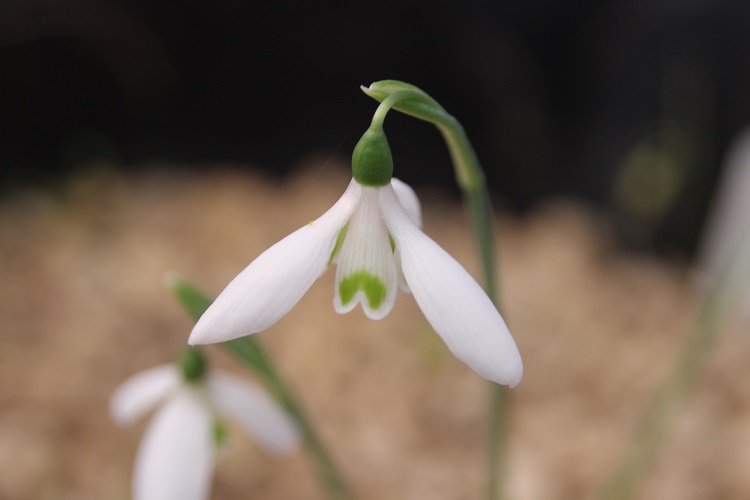Galanthus reginae-olgae 'Rachelae'
Archive entry 09.10.22

4th October 2018
"When travelling in Greece in 1886, Professor Mahaffy collected a quantity of bulbs and tubers on Mount Hymettus, which he sent home to Mr. F. W. Burbidge, so well known to everyone
who takes an interest in choice flowers. One of these roots provbed to be a snowdrop flowering in October and November. Hearing of this from a mutual friend, I wrote to Mr. Burbidge
for information about it, and his reply was accompanied by the original bulb, leaving him an offset only which had formed. This great kindness to a perfect stranger was quite
unexpected, and I take this opportunity of expressing my gratitude to Mr. Burbidge for it, and also for the many genial letters so full of valuable hints and sketches with which he has
favoured me from time to time.
G. Rachelae is of the same type as G. octobrensis, but the flower is a little larger, and the leaves are quite a third broader, and it seems to have a stronger constitution
than that variety. It also differs in being a week or ten days later in flowering. Is this the G. Olgae of Orphanides?"
(James Allen writing in the Journal of the Royal Horticultural Society, vol.13, 1891.)
Professor Mahaffy introduced two autumn flowering snowdrops from his travels, named G. Rachelae and G. Elsae after his two daughters. G. Elsae was believed
extinct in cultivation in the middle of the last century. The name 'Rachelae' lives on as a form of G. reginae-olgae and could be the same plant as originally introduced.
On the other hand it has been a long time, the cultivar seemed to disappear for most of the 20th century and its reappearance in cultivation may owe more to wishful thinking than
long-term survival.
References:
Bishop, M., A.Davis and J.Grimshaw. Snowdrops, A monograph on cultivated Galanthus. Griffin Press Publishing ltd. 2001 (reprinted 2006).
Davis, A.P. The Genus Galanthus.The Royal Botanic Gardens Kew/Timber Press.1999
Stern, F.C. Snowdrops and Snowflakes. The Royal Horticultural Society.1956.

